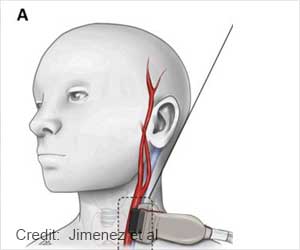New blood pressure guidelines can change the diagnostic and treatment thresholds, which could only increase the risk and label another 31 million Americans as having hypertension.

‘New blood pressure guidelines can only put people at risk and may label another 31 million Americans as having hypertension.’





"Labeling a person as having hypertension increases their risk of anxiety and depression, as compared to the risk for people with the same blood pressure who aren't labelled as hypertensive.Second, it means more people may experience serious adverse effects from treatments.
Third, in countries without universal health coverage, such as the United States, people newly diagnosed with hypertension may face difficulties gaining insurance coverage for a 'pre-existing' condition.
Report co-author, Bond University Professor Paul Glasziou said: "The ACC/AHA guideline follow an established pattern in the medical specialties, where disease definitions are more often widened than narrowed.
The recent recommendations from American College of Cardiology and the American Heart Association are as follows:
- Lowering the threshold for diagnosing hypertension in adults from 140/80 mmHg to 130/80 mmHg
- Lowering the threshold for drug treatment of 'high risk' adults with hypertension who have existing CVD from 140/80 mmHg to 130/80 mmHg
- Lowering the threshold for drug treatment of adults with a calculated 10-year CVD risk ?10%, or otherwise high risk, for example, people with diabetes or renal disease, from 140/80 mmHg to 130/80 mmHg
Advertisement
However, the 2017 ACC/AHA guideline would classify an additional 13.7 percent of all adults as having hypertension, 31 million additional people in the United States as having hypertension, and around 2.4 million additional Australians.
Advertisement
"Doctors should continue to support healthy choices with regard to diet and physical activity regardless of whether a patient's systolic blood pressure is above or below 130 mmHg," said Bond University co-author, Professor Jenny Doust.
"When there is a question of starting blood pressure medication, the risk of cardiovascular disease should be estimated using a reliable risk calculator and the potential benefits and harms discussed with the patient".
Source-Eurekalert















